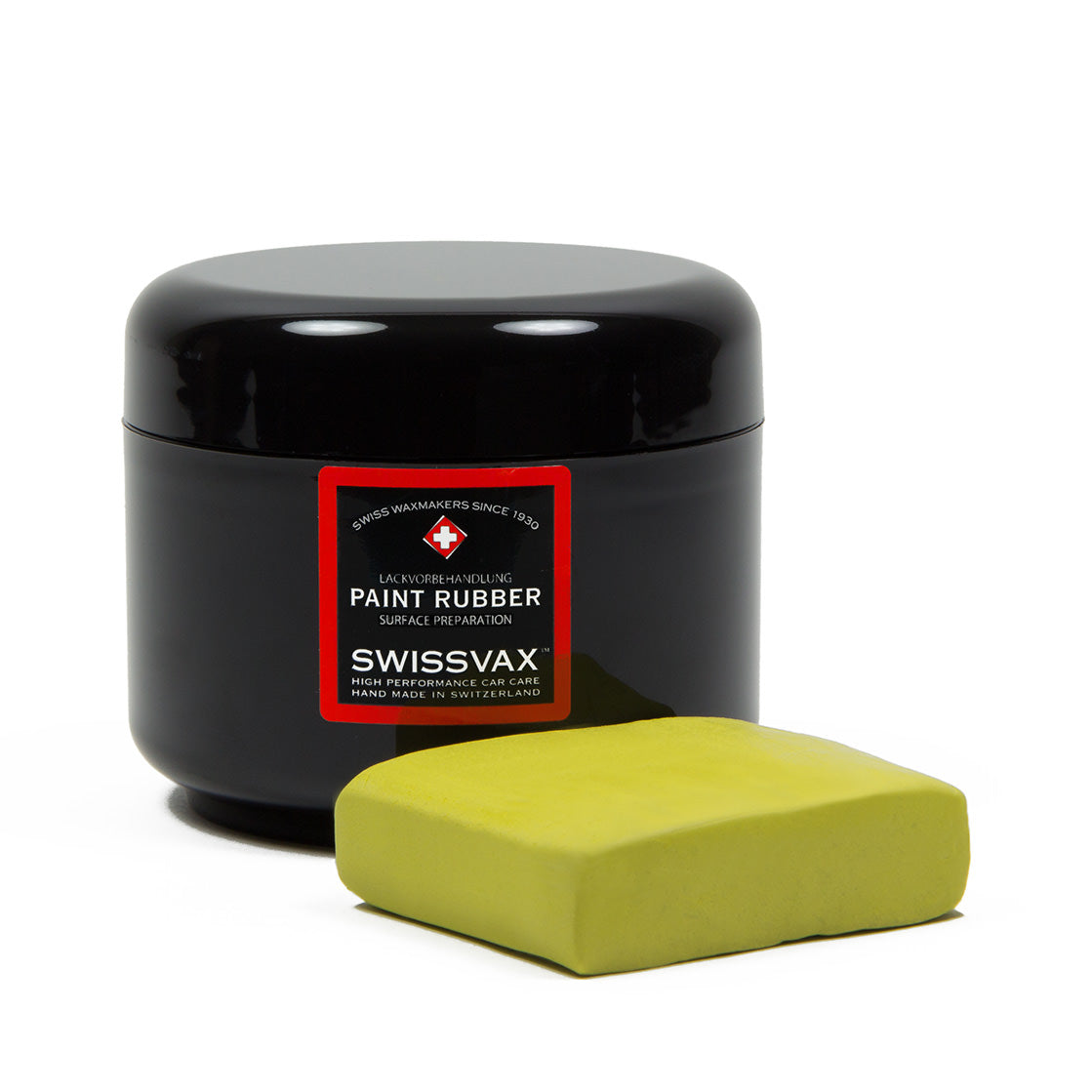
We Say
Swissvax Paint Rubber comprises a moderately abrasive clay bar that is ideal for enthusiasts and professional detailers alike. Safe for use on all painted and glass surfaces, it quickly removes stubbornly bonded surface contaminants such as industrial fallout, paint overspray and iron filings, and leaves treated surfaces feeling perfectly smooth to the touch. Its moderate abrasive strength makes it ideal for bi-annual use and its smooth texture is unlikely to cause any marring, even in the hands of novices.
Key Features
Abrasive Strength6/10(Compared To Others)
Net Weight125 g(Without Packaging)
Removes ContaminantsYes(All Types)
Description
Swissvax Paint Rubber comprises a mid-strength, smooth-textured, clay bar that is safe for use on all painted and glass surfaces provided that it is used in conjunction with a suitable clay lubricant such as Swissvax Quick Finish. It has a moderate level of abrasive strength that enables it to quickly and efficiently cut away all manner of stubbornly bonded surface contaminants, which leaves treated surfaces feeling perfectly smooth and ready for polishing or the addition of sealant or wax protection.
Specification
| Abrasive Strength | |
|---|---|
| Construction | Polybutene resin |
| Net Weight | 125 g |
| Removes Inorganic Contaminants | Yes |
| Removes Organic Contaminants | Yes |
| Strips Coatings | No |
| Strips Sealants And Waxes | Yes (partially) |
How To Use
Swissvax Paint Rubber is designed to work optimally with Swissvax Quick Finish, although other clay lubricants may also be used. Before use, divide the clay into several pieces and soften them up in a bowl of warm water. When you are ready to start (after washing and rinsing your car normally, and then treating the bodywork and glass with tar and iron removers), take out one of the pieces and mould it into a patty shape. Next, soak the first surface to be treated with a clay lubricant (e.g. Swissvax Quick Finish) and, using light pressure, begin rubbing the clay over it in straight lines in all directions. Initially you may feel some resistance (as the clay encounters residual contaminants), but this will gradually ease until the clay glides freely, indicating that the contaminants have been fully removed. Swap the piece of clay after each panel or window (to ensure you are always working with a soft piece) and repeat these steps until all of the bodywork and glass is done. Finally, either foam or wash the car again, and then rinse it thoroughly and dry off. Note that if you drop a piece of clay at any point you must immediately discard it, otherwise you run the risk of damaging your car.

